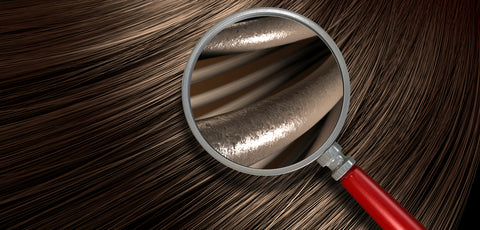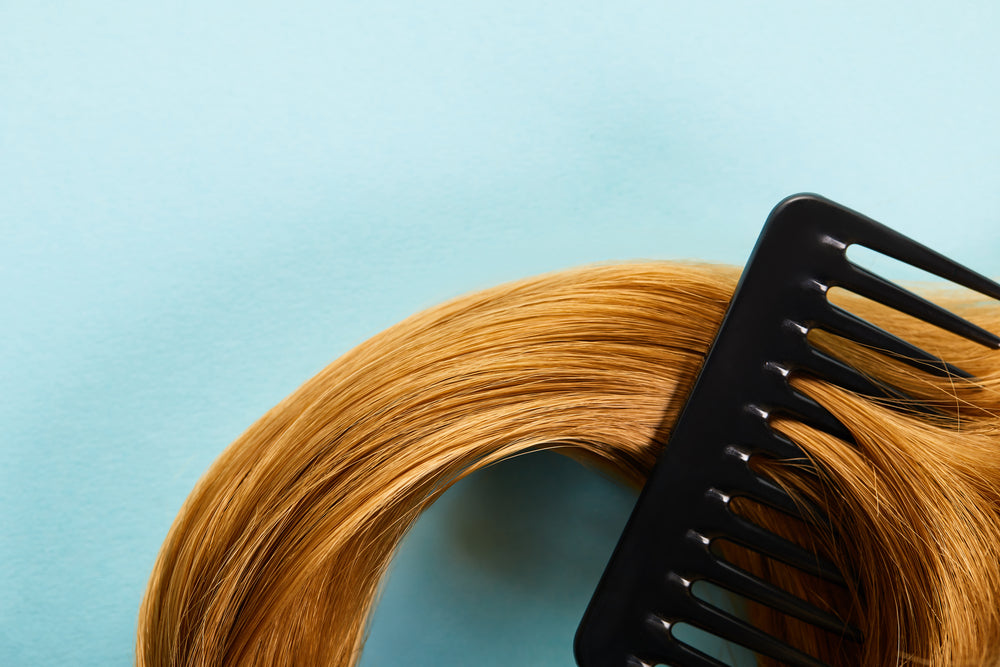Understanding The Hair Growth Cycle

Our hair is one of our most defining characteristics.
Many take pride in how they choose to style their hair.
On the flip side, hair thinning and balding can be a devastating experience.
Have you noticed a lot of shedding or hair loss? If so, keep reading.
This blog post covers the four stages of the hair growth cycle.
Hair is really a very complex part of the body.
At the most basic level, hair is elongated shafts that grow from the body and provide a defining look.
It is one of the first things we notice about someone, even if we are not specifically looking at their hair your visible hairlines, facial hair and hairstyles help enable quick recognition.
Right or wrong, hair often impacts bias and is often used to make assumptions about age, gender, race and health.
Hair helps transmit sensory information to our brains as hair movement stimulates the scalp, and it can respond (standing on end) if the muscles at the base of each hair react and stand up.
What is Hair?

By week 22, a developing fetus will already have around 5 million follicles of hair on the body.
The fine downy hair (lanugo) covers the baby’s body completely.
This is the most hair follicles anyone will ever have since the body won’t develop new follicles.
Each hair is made up of two sections: the follicle and shaft.
The follicle is made of several layers and buried into the skin.
At the base of the follicle, the papilla makes up the bulb of the hair.
The bulb is the only living part of your hair and the cells there divide every 1-3 days (faster than any other cell in your body).
The hair shaft is what we see without pulling the hair from the head.
The shaft is a hard protein (keratin) that has already died.
Each shaft makes up three layers (medulla, cortex and cuticle).
The inner layer (medulla) makes up the pith or marrow of the hair.
The middle layer (cortex) makes up the bulk of the shaft and determines color.
The outer layer (cuticle) creates a scale-like overlapping outer layer, defining the texture.
Stages of the Hair Growth Cycle

A healthy adult loses around 50-100 hairs each day on average.
Hair grows at a rate of about .3-.4 mm every day (around 6 inches each year).
Human hair shedding is based mostly on the individual hair growth cycles and not entirely seasonal or cyclical like most other mammals.
You always have hairs in each of the three stages of growth or shedding.
Stage 1: AnagenThis active phase is when the cells in the root of the hair are dividing rapidly.
As they divide, a new hair is formed, pushing into the hair follicle above.
During this first stage, the hair is growing around a centimeter every month.
This stage typically lasts around 2-6 years.
At any point, around 90% of your hair should be in this phase.
If you have a short first stage of active growth, you might struggle to grow your hair past a certain length.
On the other hand, people with very long first stages of growth will be able to grow very long hair if they choose to.
This is the reason your eyelashes and eyebrows aren’t very long—their active growth stage only lasts around 30-45 days.
Stage 2: CatagenDuring the transitional stage, there is a period of time where the growth stops and the hair changes into a club hair (hair that has stopped growing and been cut off from its blood supply, but it remains in place until it is shed).
The change occurs with the outer sheath shrinking and attaching to the root of the hair while separating from the follicle.
Around 1-3% of your hair will be in this phase during any given time.
Stage 3: TelogenThe resting phase of the hair lasts for around 100 days (longer for arm hair, eyebrows and eyelashes). The club hair is fully formed at this point and nothing is occurring at the root or within the shaft itself.
At any given time, around 8-12% of your hair is in this third stage.
During this stage, the hair doesn’t usually shed but stays in place while allowing new hairs to start to form in the follicles.
Stage 4: ExogenAlso known as “return to anagen,” the fourth stage of the hair growth cycle isn’t really a true stage.
The exogen phase is really more of an extension of the telogen stage, but defined by the hair releasing from the scalp as new hairs grow in the follicles.
Average hair shed is typically around 50-100 hairs falling out per day during this “fourth” phase.
Most are lost from the body through brushing, washing or touching.
People with curly hair that may not brush between washes are more likely to experience a large amount during wash day, since the hairs fell from the scalp and were trapped by other hairs from completely falling away.
Can You Lengthen Your Hair Growth Cycle?

There are all kinds of myths about how to increase growth or lengthen the hair cycle.
Your genetics, hormones and physical health will all play a part in how long your hair growth cycles last and how thick your hair is.
However, there are things you can do to improve the health of your scalp, strengthen your hair and reduce unnecessary damage.
Your hair is more likely to be pulled out before the end of the telogen phase if you damage it with heat, brushing and pulling.
Being gentle on the hair allows it to get through all four stages of the growth cycle, enabling the thickest head possible.
Stress can cause increased hair thinning. Strain and anxiety can speed up the growth cycle of the hair, causing higher numbers of hairs to enter the resting phase.
When the third cycle is complete months later, you will notice a higher level of heavy shedding.
You might lose double or triple the normal amount of hair typically lost each day, leading to a much thinner head of hair.
If you are looking for longer and thicker hair, you should start with these five things you can do RIGHT NOW to improve the condition of your hair.
If you want to help treat your hair with a cutting edge, all-natural product line that will combat thinning hair, order More Hair Naturally now!

